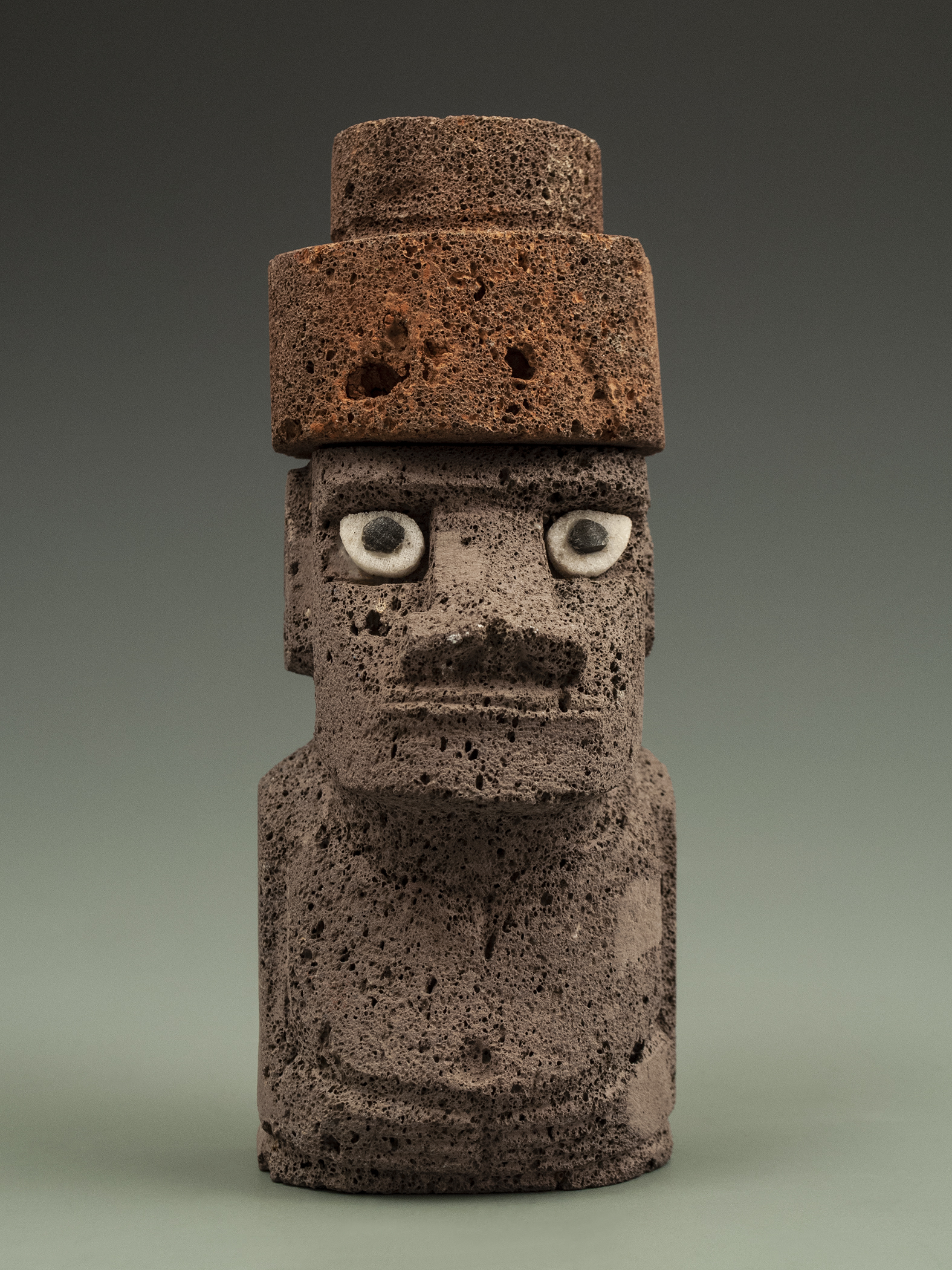Souvenir Moai
Rapa Nui, Easter Island, 2006

The Southern Hemisphere’s Timbuktu is an isolated landfall 2,290 miles off the coast of Chile. The closer you get, the faster its name changes—like one of the elusive destinations in Italo Calvino’s Invisible Cities.
What I knew as Easter Island (a Portuguese explorer first visited on Easter, 1722) became Isla de Pasqua on my boarding pass from Santiago. On landing I learned I was actually on Rapa Nui: The Big Island. And moving deeper into the landscape, across grassy hills punctuated by fallen and restored moai, I heard a quieter name: Te Pito O Te Henua, The Navel of the World.
There are 887 huge moai in all. Legend claims some literally walked to their final locations using their mana: spiritual power. Though they look stern, they were not meant to threaten. These were protector deities. Erected in rows along the rocky coastline, they face not the ocean but inland, watching over their tribes.
Their purpose, dates of creation, and means of transport are vague. History, on Rapa Nui, is a pliant commodity. Stories are passed within families, between families, to archeologists and journalists, guidebook authors, and crackpots. No one knows anything for sure. This is not a problem. To the contrary; it’s as if many universes are possible.
The leader of my press trip to Rapa Nui was a tall German woman. We’d traveled together before, and I was hopelessly in love with her. I wanted nothing more than to be her moai; to watch over her through the centuries, keeping all dangers at bay. We spent many hours together on the island. One day, tired of shopping for souvenirs, we visited the post office. The clerk agreed to stamp our passports with Easter Island postmarks. Those, my journals, and this—the moai she helped me choose— are all I’ll ever need to recall the mysteries, and my unrequited dreams, on Rapa Nui.
At a certain point in our lives, the moai within us start to pivot, turning from the tempest and toward the slower-moving rhythms of our inner landscape. It’s all right. I’m not there yet, but the mana is rising. Because no matter which way I face, nothing is fully lost. I can still hear the waves, the thwop of rubber stamps on paper, the musical laughter rising from the possible worlds I might have inhabited.
